|
Grandma's Green Tea
|
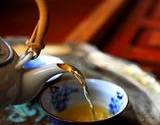 | 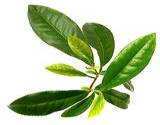 | 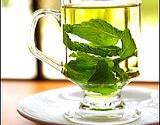 |
Popular in China and other Asian countries for thousands of years, green tea has been shown to have significant medicinal as well as therapeutic properties. Like black tea more familiar in Western countries, green tea comes from the Camellia senensis plant.
The difference between black and green tea lies in their processing. Black tea is fermented, whereas green tea, which is prepared from steamed, dried leaves, is not allowed to ferment. Also, some types of green tea are lightly roasted.
The minimal processing helps retain the medicinal tea's green color, gives it a flowery aroma and fresh flavor and also preserves the active ingredients that produce the herbal tea's health benefits.
Brewing Green Tea
Place 1 rounded teaspoon of tea leaves per cup in a teapot. Heat the water until it is simmering (160 degrees); cool briefly (vigorously boiling water can destroy the tea's gentle flavor). Pour the water over the tea leaves, cover the pot. For a mild flavor, let the post stand 2-3 minutes, for a stronger flavor steep for 4-6 minutes. Warning: contains high caffeine content.
Too much caffeine can increase your heart rate, restlessness and insomnia. To lower the caffeine content or green tea, pour a little water over the leaves prior to infusion and strain the water off after 30 seconds. Then prepare the tea as usual.
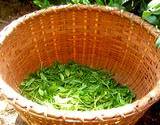 | 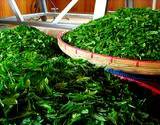 | 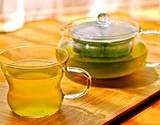 |
Medicinal Benefits of Green Tea
All tea leaves contain caffeine, tannins, essential oils, polyphenols, vitamins, minerals and trace elements (such as fluoride). Green tea has many health benefits. It is an anti-inflammatory, lowers blood cholesterol levels, has beneficial effect on the circulation and liver, protects against tooth decay and detoxifies the blood.
The Active Ingredient Caffeine
While greentea is highly touted for its health benefits, it does contain a high level of caffeine. Depending on how long it brews, a 6-ounce cup of this medicinal tea has 10-50 mg. of caffeine. While this stimulant improves concentration and boosts alertness, it also increases the heart rate and could keep you from getting a good night's rest.
The Trace Element Fluoride
The fluoride found in this herbal tea hardens tooth enamel and makes teeth more resistant to decay. Do not give tea to infants, however, because it may inhibit iron metabolism.
For Menopause
Vitamin and mineral needs increase during menopause. Daily consumption of green tea can supply women with the extra nutrients.
Giving Up Coffee
If you are trying to refrain from that daily java, consider switching to green tea. It has a smoky and bitter flavor that coffee drinkers enjoy and the caffeine content, which is less than coffee, will keep away the caffeine-withdrawal headaches.
For Athletic Performance
Cold green tea is an ideal thirst-quencher. Its stimulating effect and high concentration of vital substances increases mental and physical performance during exercise.
For Fasting and Detoxification
Known in china as a "fat-melter" because of its cholesterol-lowering effects, this medicinal tea contains no calories and is a recommended nutritional supplement.
Cancer Prevention
According to scientific studies, compounds called polyphenois in green tea may inhibit the growth of cancer cells and the development of tumors. The benefit of these compounds is generally attributed to their antioxidant activity. Several cups of green tea per day are needed to enjoy this benefit.
Common Types of Green Tea
Japan
Sencha: This is the most widely consumed tea in Japan and is also probably the most common Japanese tea available today.
Bancha: A low-caffeine variant, this tea is similar in appearance to sencha, but has a less bitter flavor.
India
Green Assam:
This tea comes from the Assam plateau, the largest tea-growing district in the world. Only a small amount of the tea from this area is used to produce green tea.
Green Darjeeling:
Grown on the southern slopes of the Himalaya Mountains, green Darjeeling tea is especially gentle on the body because of the minimal processing.
China
The leaves are tightly rolled into pellets that resemble buckshot. They unfurl once steeped in water.
Jasmine tea:
A slightly fermented, flowery tea produced from genuine jasmine flowers. Some varieties are combinations of green and black teas.
DISCLAIMER:
The statement's made here have not been approved by the Food and Drug Administration. These statements are not intended to diagnose, treat or cure or prevent any disease. This notice is required by the Federal Food, Drug and Cosmetic Act.
Return from Green Tea Medicinal Benefits to Grandma's Medicinal Tea Guide
Return to Grandma's Wisdom Home





